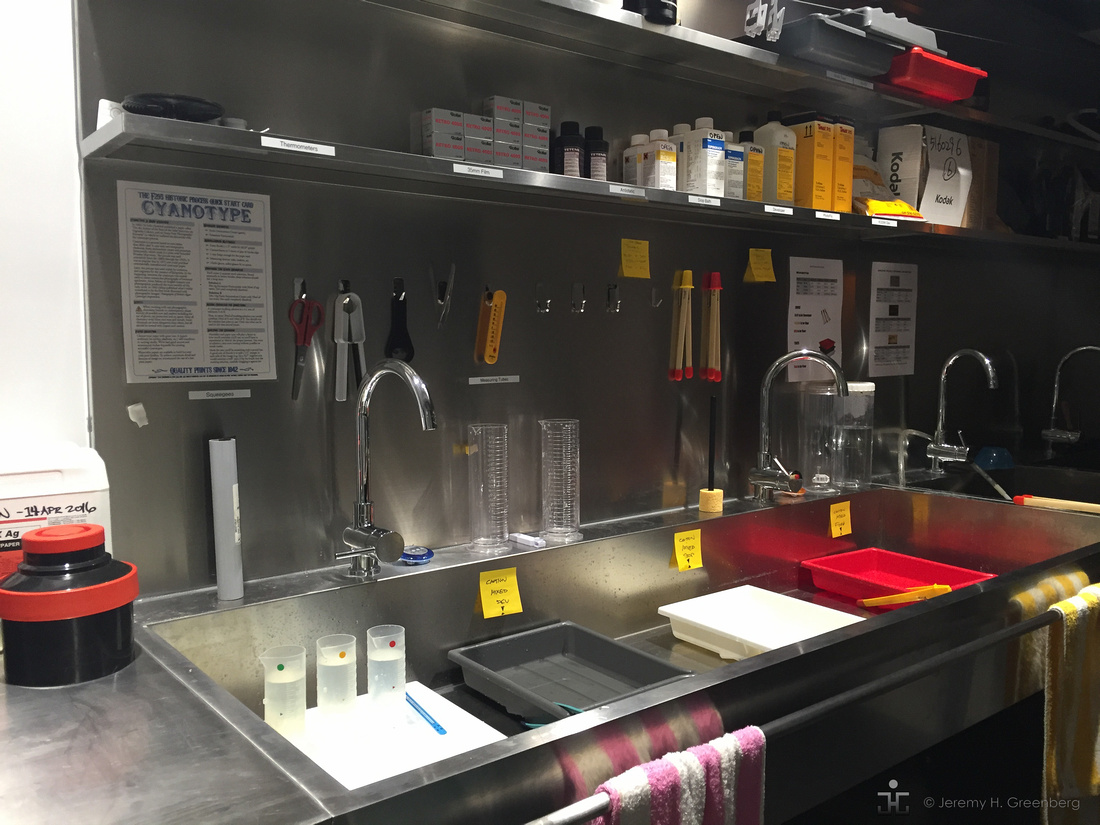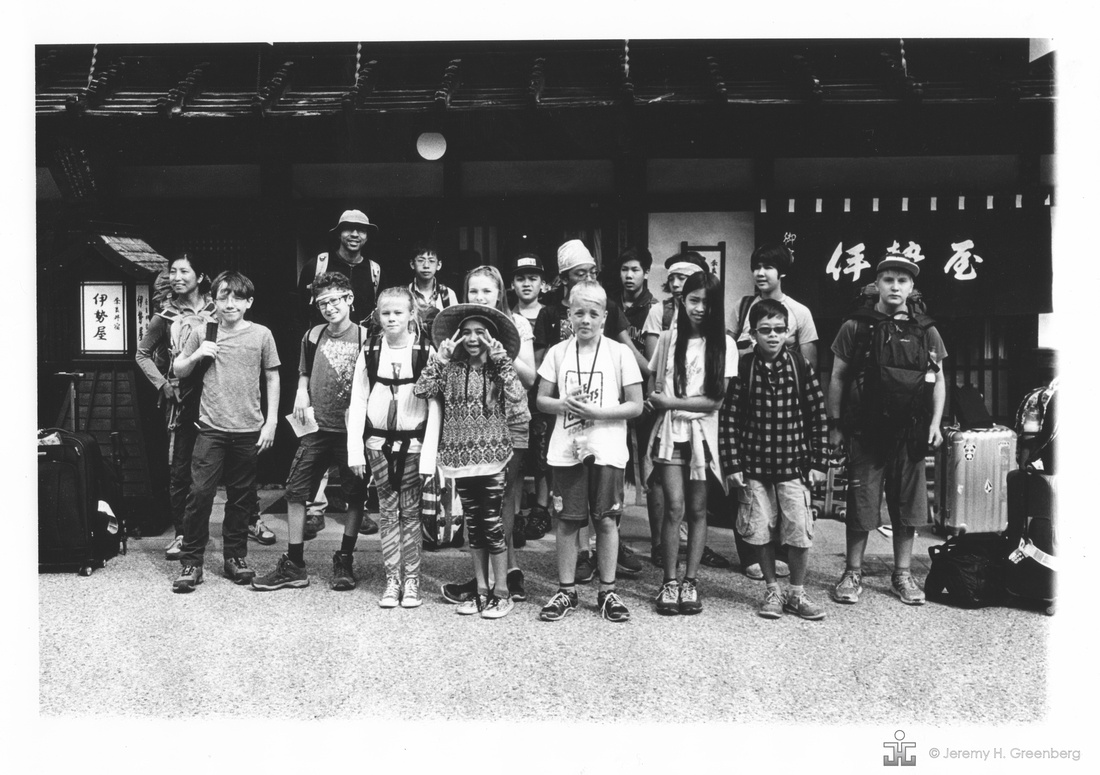Blog #25 Don’t Be Afraid of the Dark[room].
Blog #25 Don’t Be Afraid of the Dark[room].
In previous blogs posts, I have discussed the Photography Club that colleague and photographer Brendan Fielding and I have been hosting for primary international school students at The Harbour School. We have finally completed the darkroom. We have successfully developed 35mm film, made contact sheets, and are now making prints.
Making prints will be the topic of this week’s blog. The steps to make a print are somewhat similar to processing film. Starting with a CLEAN negative, an enlarger, and photographic paper, step one is basically to make a test strip. The test strip provides information, given the settings on the enlarger (i.e. height, focus, f-stop, paper sensitivity, and time of exposure). Small sections of a strip of paper are exposed for equal intervals of time such as 2 second, 4 seconds, 6 seconds, and so forth. Then, changing nothing but time, you block off sections of the paper making a strip of paper exposed to 3, 4, or 5, (could be more) exposure times. The test strip gives you information about how long the proper exposure for a given negative, paper, and enlarger settings needs to be in order to make a print that is exposed properly. It doesn’t take long to make the test strip; less than five minutes usually.
Next comes the developing part that mirrors the processing of film. At this stage, you already prepared four trays in the appropriate size for your paper (i.e. 8”x10”, 11”x 17”). The first tray contains a dilution of paper developer and water, the second had the stop bath, the third has the fixer, and the fourth is a tray with only water for final rinsing. There are other steps such as anti-static agents and paper treatments, but these steps are not essential to make basic long-lasting paper prints. The paper is moved through the process and then placed on a drying rack to air dry, hung up, or otherwise placed in a flat drying machine until try.
There are basically two types of paper: fibre based and RC or plastic (resin) coated paper. In general, fibre is more expensive and may make better prints, while the RC stuff is more durable and just fine for regular usage while being less expensive and tries flatter and is less subject to curling. Within these two paper types, there are various finishes or sheens such as high gloss, glossy, semi-matte, matte, pearl and some other similar variations or tones of white such as bright white, to yellowish or warmer tones. This is really a matter of personal taste and depends on the preference of the artist/photographer.
Unlike developing film which usually takes about 20-30 minutes from start to finish, paper is much faster. Paper gets exposed to light for around 3-10 seconds, developing takes 120 seconds, stopped for 20 seconds, fixed for 2-5 minutes (depending on the type of paper), and then placed in the final rinse for up to about 10 minutes. The cleaner or chemical free the paper is, the longer it will last. Then the paper is dried and the print is ready to be handled, scanned, or framed.
The process is fairly straight forward, albeit complex with much room for error. A proper understanding of the settings of the enlarger is required. The photographer must read the manual or risk making prints that simply do not come out right. When developed correctly, the resolution of photographic paper is the best that there is and the process is highly rewarding. There is a quiet calm, and zen like feeling in the darkroom when one goes through the motions and gets in a rhythm. Every photographer be they hobbyist, amateur, or professional should have this experience. It’s fun!
Don’t be afraid of the dark[room].
jhg



